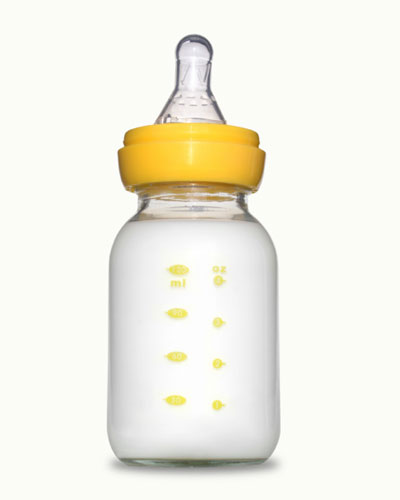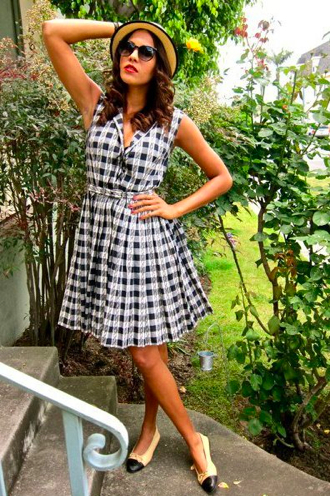
Decades ago, the only baby bottles available to parents were made of glass. But glass was heavy and, more importantly, breakable. So when plastic bottles came along that were lighter and shatter-proof, the glass bottle became almost obsolete.
However, recent reports that a type of plastic found in baby bottles might cause potentially harmful changes in developing babies has left parents wondering if perhaps old-fashioned glass wasn’t such a bad thing after all. Which is safer, glass or plastic? Here is some background on baby bottles plus some tips on how to choose — and use — bottles safely and effectively.
Baby Bottle Worries
The problem with glass bottles is pretty obvious — drop one on the floor in the middle of a late-night feeding, and you’ll have a roomful of shattered glass to clean up. Glass is also heavy and cumbersome. On the upside, glass bottles are sturdy, and they don’t contain any chemicals that could potentially get into the baby’s formula or breast milk.
Plastic baby bottles are lightweight, strong, and unbreakable. However, concerns have arisen about the polycarbonate type of plastic bottles because they contain a chemical called bisphenol A (also called BPA). Bisphenol A is also used in everything from compact discs to the lining of cans, as well as other consumer products. A 2007 report by the organization Environment California showed that when heated, five popular brands of BPA-containing plastic baby bottles leached high levels of bisphenol A. In studies of lab rats, low levels of BPA were linked to changes in the brain and reproductive system that researchers say may contribute to an increased risk of prostate and breast cancers, ovarian cysts, endometriosis, and early puberty.
Before you panic, know that government health officials don’t believe that the amount of BPA in baby bottles and other consumer products is dangerous. After reviewing research on the plastic, the FDA stated that based on its ongoing review it believes the amounts of bisphenol A that find their way into food and drinks are too low to cause any real health effects in humans. However, the agency is continuing to look into the question of BPA safety, and for now, the issue remains unresolved.
Most major bottle manufacturers—Playtex, Gerber, Evenflo, Avent, Dr. Brown, and Disney First Years, to name a few—have already removed the chemical from their products and replaced polycarbonate with newer materials. But those haven’t undergone the same safety testing other plastics have.
Choosing a Baby Bottle
There are essentially three types of baby bottles: plastic, plastic with disposable liners, and glass.
Although the jury is still out on bisphenol A, if you want to avoid any bottles that contain it, look for the #7 recycling symbol or “PC” on the bottom. That’s usually a sign that the bottle contains BPA. Buy new plastic baby bottles from American Manufacturers that are clearly marked BPA free and have the numbers 1, 2 or 5 inside a triangle on the bottom of the bottle. Also avoid using plastic liners, as they may leak chemicals as well. Also choose a silicone nipples over latex because latex has been linked to allergies and cancer causing componets. Here are some BPA free bottle companies: Green to Grow, Born Free, Medela and Think Baby
Glass is a completely inert material that poses no health problems, and neither hot nor warm liquids cause the material to break down (as they do with plastic). Also glass can easily be recycled. If you want to try glass bottles but you’re concerned about them breaking, some companies make silicone sleeves that go over the bottle to protect it, like Weego Baby.
Caring for Your Child’s Baby Bottle
Here are some tips on caring for your child’s baby bottle and reducing potential risks from BPA:
- Never store breast milk or formula in plastic bottles. Pour it into the bottle just before your baby is ready to eat. Throw out anything that is left over.
- Heat and wear can both increase the rate at which BPA leaches out of the plastic. Heat polycarbonate bottles in warm water (not boiling), rather than in the microwave. Microwaves should also be avoided because of the risk of burning baby’s mouth. Throw out any polycarbonate bottles that are scratched or cracked.
- Don’t use hot water or a harsh cleaner on polycarbonate bottles because this also can cause the plastic to break down more quickly. Instead, use a gentle cleaner and warm water.
- Replace any glass bottles that have cracks or chips in them.
Keep in mind that bisphenol A is also found in the linings of formula cans and can get into the product. You might want to opt for powdered formulas, which typically contain lower levels of BPA than liquid formulas. – WebM.D.








2 comments ↓
forwarding this to all my pregnant friends
I prefer glass bottles to plastic… Weego Baby was my preferred brand too.
Leave a Comment